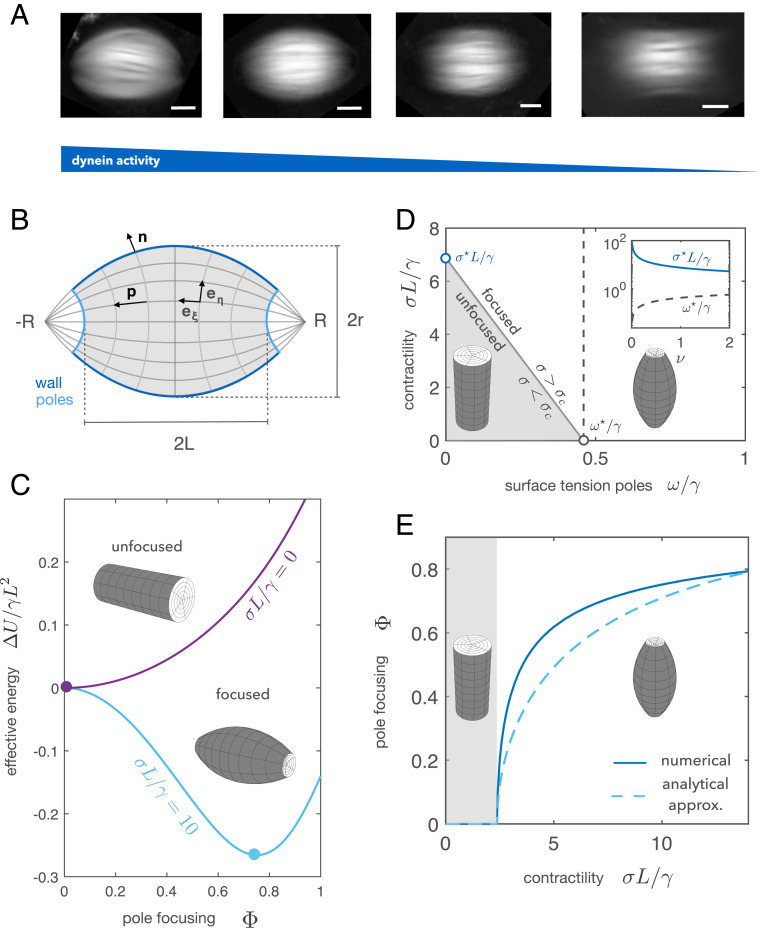Fig. 1.
Theory of spindle pole focusing. (A) Averaged retardance images of egg extract spindles under different concentrations of the dynein inhibitor p150-CC1. Images correspond to different titration days. (Scale bars: 20 m.) (B) The spindle is described as a tactoid of length , width , and pole-to-pole distance . The two dimensionless parameters describing the spindle shape are the pole focusing parameter and the aspect ratio . The spindle is parameterized using bispherical coordinates , and the director field follows the coordinate (SI Appendix). (C) Dimensionless energy of the spindle relative to the cylindrical configuration as a function of the pole focusing parameter for two different values of the stress . The shape is found by minimizing . (D) Phase diagram of how spindle shape changes as a function of the contractile stress and the surface tension at the poles . (Inset) Evolution of and as a function of the dimensionless volume . (E) Bifurcation diagram considering dynein contractility as the control parameter: Below a certain critical contractility the cylindrical configuration is stable. Once the contractility exceeds the threshold value , the structure undergoes axisymmetric buckling, acquiring a barrel-like shape. The solid curve corresponds to the full solution, and the dashed curve corresponds to the analytical solution expanding the energy up to quartic order in (SI Appendix). The study is done in the limit of constant volume () with parameters , , , and .

